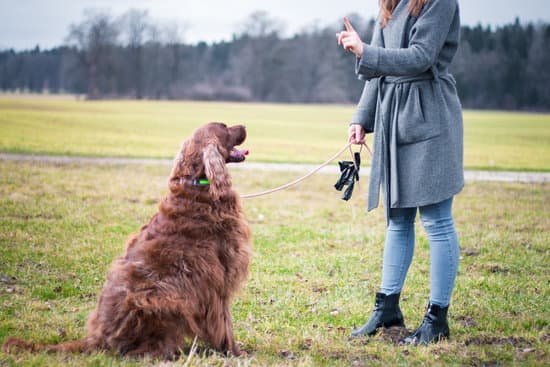Separation anxiety can be a challenging issue for both dogs and their owners. Understanding what separation anxiety is and why it develops is crucial in addressing and resolving this problem. In this section, we will delve into the definition of separation anxiety in dogs, explore the reasons behind its development, and identify the signs and symptoms to look out for.
Separation anxiety refers to a behavioral disorder where dogs experience fear or distress when they are separated from their owners or left alone. It can manifest through various behaviors such as excessive barking, destructive chewing, digging, pacing, or even attempts to escape. This condition can cause significant stress for both the dog and their owner, impacting their overall well-being and quality of life.
There are several factors that can contribute to the development of separation anxiety in dogs. These include genetics, lack of early socialization, traumatic experiences, changes in routine or environment, or even over-dependence on their owners. Understanding these underlying causes can help us formulate effective strategies to train our dogs out of separation anxiety.
Recognizing the signs and symptoms of separation anxiety is essential for early intervention. Common indications may include excessive vocalization shortly after departure, destructive behavior focused on doorways or windows, inappropriate elimination indoors despite having been house-trained, or even self-inflicted injuries due to frantic attempts to escape confinement. By being aware of these behaviors, we can take appropriate steps to address them effectively.
The Importance of Early Socialization and Training
Early socialization plays a critical role in preventing separation anxiety in dogs. By exposing puppies to various people, animals, environments, and experiences during their sensitive period of development, they become more confident and adaptable as adult dogs. This helps them feel more secure when left alone, reducing the likelihood of developing separation anxiety. When socializing your puppy, it is important to expose them to different stimuli gradually and positively reinforce their calm behavior.
In addition to socialization, establishing a routine and structure for your dog can also help prevent separation anxiety. Dogs thrive on predictability and knowing what to expect from their environment. Establishing regular meal times, walks, play sessions, and rest periods can create a sense of security for your dog. Maintaining consistency in daily routines helps your dog feel more relaxed when you’re not around.
Basics of obedience training are crucial in reducing separation anxiety. Teaching your dog commands such as “sit,” “stay,” “leave it,” and “come” not only improves their overall behavior but also builds trust between you and your furry friend.
Obedience training provides mental stimulation and helps redirect anxious behaviors by giving them something else to focus on. Incorporating positive reinforcement techniques such as treats or praise when they perform well during training sessions further reinforces positive associations with being alone or following commands.
Creating a Safe and Comfortable Environment
Providing a designated area for your dog when you’re away
One of the key elements in training a dog out of separation anxiety is creating a safe and comfortable environment for them when you’re away. This helps them feel secure and reduces their anxiety levels. Designating a specific area in your home where your dog can stay while you’re gone can make a significant difference.
Choose a quiet and enclosed space, such as a bedroom or laundry room, where your dog feels safe and relaxed. Make sure this area is free from any potential hazards or objects that could cause anxiety.
Implementing comforting stimuli such as music, toys, and blankets
In addition to providing a designated area, implementing comforting stimuli can further alleviate separation anxiety in dogs. Leaving calming music or white noise playing quietly in the background can help soothe your dog’s nerves. It creates a consistent and relaxing ambiance that masks any sudden noises that may trigger their anxiety.
Providing toys or interactive puzzles filled with treats can also keep your dog occupied and distracted while you’re away. This not only combats boredom but also redirects their focus towards something positive.
Blankets or clothing items with your scent on them can also be beneficial in creating a comfortable environment for your dog. Your scent provides reassurance and reminds them of your presence even when you’re not physically there. Leaving these comforting items within reach in their designated area will provide comfort and help reduce separation anxiety.
Using crate training to alleviate separation anxiety
Crate training is another effective tool to help alleviate separation anxiety in dogs. Contrary to popular belief, crates are not meant to be punishment; rather, they should serve as a den-like space where dogs feel safe and secure. For dogs with severe separation anxiety, being crated can prevent destructive behavior and provide structure during your absence.
It’s important to introduce the crate gradually and positively. Start by leaving the crate door open and encouraging your dog to explore and enter on their own. Place treats or toys inside to make it a positive experience. Gradually increase the amount of time your dog spends in the crate while you’re home, using treats and praise to create positive associations.
As your dog becomes more comfortable with the crate, you can start using it during short departures. Begin with just a few minutes at a time and gradually increase the duration. The goal is for your dog to view the crate as a safe space where they can relax even when you’re not around. Crate training combined with other techniques can greatly reduce separation anxiety and provide a sense of security for your dog.
Gradual Departure and Desensitization
Gradual departure and desensitization is an essential technique in training dogs out of separation anxiety. This method involves slowly increasing the duration of your departures, helping your dog become more comfortable with being alone over time. By implementing this strategy, you can help alleviate your dog’s anxiety and build their confidence in being by themselves.
One way to incorporate gradual departure and desensitization is by practicing the “stay” command. Start by leaving your dog in a separate room from you for a short period while giving them the command to stay. Gradually increase the duration of these separations, always ensuring that your dog remains calm before returning to them. Consistently rewarding calm behavior during departures will reinforce positive associations with being alone.
Another aspect of desensitization is gradually exposing your dog to triggers associated with departures. For example, putting on shoes or grabbing keys can signal to your dog that you are about to leave. To reduce their anxiety, repeat these actions multiple times throughout the day without actually leaving the house. Over time, your dog will become less sensitive to these cues and experience reduced distress when they occur.
| Separation Duration | Behavior | Reward |
|---|---|---|
| 5 minutes | Slight restlessness | Treat |
| 10 minutes | Lie down quietly | Praise and playtime |
| 15 minutes | No signs of distress | Treat and extended playtime |
Remember, patience is key when implementing gradual departure and desensitization. Each dog’s progress will vary, so it’s important to celebrate small victories along the way and maintain a positive attitude. With consistency and perseverance, you can help your dog overcome separation anxiety and build a stronger bond with them.
Counterconditioning Techniques
Counterconditioning techniques can be a valuable tool in training a dog out of separation anxiety. This approach involves changing the emotional response to certain triggers or situations associated with being left alone, so that the dog learns to associate these experiences with positive outcomes. By implementing counterconditioning techniques, you can help your dog feel more relaxed and comfortable when you are away.
Associating departures with positive experiences and rewards is a key aspect of counterconditioning. Before leaving, engage in activities that your dog finds enjoyable and rewarding, such as playing fetch or going for a walk. By doing this consistently, your dog will begin to associate your departure with pleasant experiences and will start to see it as something positive rather than something worrisome.
Using treats, interactive toys, or puzzles is another effective way to occupy your dog’s attention and distract them from any anxiety they may feel when you are gone. Interactive toys that dispense treats or require problem-solving can keep dogs mentally stimulated while providing a positive distraction from their anxiety. Consider filling treat-dispensing toys with their favorite snacks or using puzzle toys that challenge them mentally.
In addition to treats and toys, implementing relaxation exercises can help reduce separation anxiety in dogs. Massage therapy or aromatherapy can promote calmness and relaxation in dogs. Massaging your dog gently before leaving can help them relax and associate positive feelings with being left alone.
Similarly, certain scents like lavender or chamomile have been shown to have calming effects on dogs when used appropriately. You can introduce these scents into the environment by using essential oils diluted in water or through specially formulated sprays designed for canine use.
Utilizing these counterconditioning techniques along with other strategies mentioned earlier can greatly contribute to alleviating separation anxiety in dogs. It’s important to note that every dog is unique and may respond differently to various techniques, so it might take some trial and error to figure out what works best for your furry friend.
Patience and consistency are key, as it may take time to see progress. However, with dedication and persistence, you can help your dog build a positive association with being alone and overcome their separation anxiety.
Seeking Professional Help
When dealing with separation anxiety in dogs, sometimes it may be necessary to seek professional help. While many cases of separation anxiety can be managed and resolved through training and behavior modification techniques, there are instances where the expertise of a professional dog trainer or behaviorist is essential. This section will discuss when it’s time to consult a professional, how to choose the right one for your dog’s needs, and the benefits of seeking their guidance.
Knowing when it’s time to reach out for professional assistance can be determined by assessing the severity of your dog’s separation anxiety symptoms and the progress you have made with training on your own. If your dog’s anxiety is causing significant distress or if you have been struggling to make progress despite consistent efforts, it may be beneficial to consult a professional.
When selecting a professional for your dog, it is important to choose someone who specializes in separation anxiety or has experience in behavioral issues. Look for trainers or behaviorists who use positive reinforcement techniques rather than punitive methods. Positive reinforcement-based trainers focus on rewarding desired behaviors rather than punishing undesirable ones, which aligns with reducing anxiety and building trust between you and your furry friend.
Benefits of seeking professional guidance include receiving an expert evaluation of your dog’s specific needs and having a customized training plan designed specifically for them. Professional trainers can help identify underlying factors contributing to your dog’s separation anxiety, such as fear or lack of confidence, allowing for more targeted treatment.
Additionally, professionals can supply you with effective behavioral modification techniques tailored specifically to address your dog’s anxieties. They can provide ongoing support throughout the training process, helping you navigate challenges and adjust strategies as needed. Seeking professional help not only increases the likelihood of success in overcoming separation anxiety but also ensures that you are providing the best care possible for your canine companion.
Medication Options for Severe Cases
While many cases of separation anxiety in dogs can be effectively managed through training and behavioral modification techniques, there are instances where medication may be necessary to help alleviate severe symptoms. It is important to note that medication should always be used in conjunction with training and under the guidance of a veterinarian or veterinary behaviorist.
When considering medication for separation anxiety, it is vital to consult with a veterinarian who can properly diagnose your dog’s condition and develop an appropriate treatment plan. Medication should only be considered when other methods have been unsuccessful or when the dog’s symptoms significantly impact their well-being.
There are several types of medications that may be prescribed for dogs with separation anxiety. One common option is selective serotonin reuptake inhibitors (SSRIs), which can help increase levels of serotonin in the brain to improve mood and decrease anxiety. Other medications, such as tricyclic antidepressants (TCAs), benzodiazepines, or monoamine oxidase inhibitors (MAOIs), may also be prescribed depending on the individual dog’s needs.
It is important to recognize that medication alone will not solve the problem; it should be used as a tool alongside behavior modification techniques. Medication can help reduce a dog’s overall anxiety levels, creating a calmer state that allows them to better respond to training and behavior modification exercises. With time, consistent training, patience, and professional guidance, most dogs with separation anxiety can experience significant improvement in their symptoms and lead happier lives.
Consistency and Patience
Consistency and patience are key when it comes to training your dog out of separation anxiety. It’s important to understand that overcoming separation anxiety takes time and effort, but with the right approach, you can achieve long-term success. Here are some tips to help you stay consistent and patient throughout the process:
- Establish a routine: Dogs thrive on routine and structure, so creating a consistent daily schedule for your dog can help reduce their anxiety. This includes feeding times, exercise routines, and designated times for departures and arrivals. Stick to this routine as closely as possible to provide your dog with a sense of security.
- Gradually increase alone time: Start by leaving your dog alone for short periods of time and gradually increase the duration over days or weeks. This gradual desensitization helps your dog become more comfortable with being alone. Make sure to reward calm behavior when you return home and avoid making a big fuss over departures or arrivals.
- Use positive reinforcement: Positive reinforcement techniques such as treats, praise, and toys can be powerful tools in training your dog out of separation anxiety. Reward your dog for calm behavior during moments of separation or when they show signs of relaxation. This will help them associate positive experiences with being alone.
- Seek professional guidance if needed: If you find that despite your best efforts, your dog’s separation anxiety is not improving or getting worse, it may be beneficial to seek professional help from a qualified dog trainer or behaviorist. They can provide expert guidance tailored to your specific situation and recommend additional strategies or techniques that can help.
Remember, consistency is key in any training process, including addressing separation anxiety in dogs. Be patient with both yourself and your canine companion as progress may take time and setbacks can occur along the way. Celebrate small victories throughout the journey and maintain a positive attitude towards the training process – building a strong bond with your dog is worth all the effort in the end.
- Create a consistent daily schedule for your dog
- Gradually increase alone time
- Use positive reinforcement techniques
- Seek professional guidance if needed
Conclusion
In conclusion, training a dog out of separation anxiety is a journey that requires commitment, patience, and understanding. By following the steps outlined in this article, such as early socialization, creating a safe environment, gradual departure and desensitization, counterconditioning techniques, seeking professional help when necessary, and considering medication options for severe cases, dog owners can build a strong bond with their canine companions and overcome separation anxiety.
Throughout the training process, it is crucial to reflect on the progress made and recognize the small victories along the way. It is important to remember that overcoming separation anxiety may take time and setbacks can occur. Consistency in training methods and management strategies is key to long-term success. The bond developed between you and your dog during this process will be strengthened through trust and understanding.
Furthermore, overcoming separation anxiety has lasting benefits for both dogs and their owners. A well-socialized and confident canine companion can enjoy a more fulfilling life with increased independence and reduced stress when left alone. Additionally, owners can experience peace of mind knowing their beloved pet is not suffering from anxiety when they are away.
Frequently Asked Questions
How do you break a dog’s separation anxiety?
Separation anxiety in dogs can be a distressing condition for both the dog and their owner. To help break a dog’s separation anxiety, it is important to implement gradual desensitization techniques. Start by leaving the dog alone for very short periods of time, gradually increasing the duration as the dog becomes more relaxed and comfortable being alone.
It can also be helpful to establish a consistent routine and create a safe and secure space for the dog when they are left alone. Additionally, providing mental stimulation through toys or puzzles can help redirect their focus and alleviate anxiety. Seeking professional guidance from a veterinarian or animal behaviorist may also be beneficial in developing an effective treatment plan based on the individual dog’s needs.
Does ignoring your dog help with separation anxiety?
Ignoring your dog completely may not necessarily resolve separation anxiety but can sometimes exacerbate the problem. While it is essential to avoid reinforcing attention-seeking behaviors when leaving or arriving home, complete neglect may increase feelings of insecurity and anxiety in some dogs.
Instead of ignoring them entirely, it can be more effective to gradually teach them that your departures and arrivals are normal and not something to be overly concerned about. Incorporating positive reinforcement techniques, such as rewarding calm behavior when you leave or return, can help shift their association with these events from anxiety-inducing to neutral or positive experiences.
How do you train a dog with separation anxiety alone?
Training a dog with separation anxiety requires patience, consistency, and understanding. Initially, start with short periods of time where you leave the house and allow your dog to experience being alone without further fueling their anxiety through excessive attention or affection beforehand. Reward the dog for calm behavior during these brief separations using treats or verbal praise upon your return. Gradually increase the duration of your absences over time while maintaining this positive reinforcement approach.
It is crucial not to rush the process as it may inadvertently heighten their anxiety instead of helping them cope with being alone gradually. Additionally, ensuring that the environment is comfortable for your furry friend by providing toys or engaging activities can help distract them from their anxiety. Consider consulting a professional dog trainer or behaviorist for personalized guidance on training techniques tailored to your dog’s specific needs.

Welcome to the blog! I am a professional dog trainer and have been working with dogs for many years. In this blog, I will be discussing various topics related to dog training, including tips, tricks, and advice. I hope you find this information helpful and informative. Thanks for reading!





